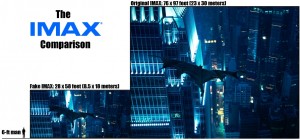 Saturday morning my wife and I decided to take our kids up to the Quad Cities to visit a couple of places we keep hearing about all the time in the news: The John Deere Pavilion and the Putnam Museum IMAX.
Saturday morning my wife and I decided to take our kids up to the Quad Cities to visit a couple of places we keep hearing about all the time in the news: The John Deere Pavilion and the Putnam Museum IMAX.
We took off late morning so that we got to Galesburg around lunch time. We stopped there and ate at the Packinghouse. I had their prime rib dip; my wife had their soup and salad bar. The children had your typical kids’ meal fare: chicken tenders or a hamburger and french fries. It was all delicious.
Then we hopped back in the van and headed north to Moline, where we stopped first at the John Deere Pavilion. Admission was free, and we all had a lot of fun climbing on the giant tractors. My kids especially enjoyed sitting in the driver’s seat and pretending to drive. There were several interactive/computerized exhibits as well. One of them was a flight-simulator-type of program that let you “drive” a harvester. Watching the children try to steer straight was a real hoot!
After a quick stop in the adjacent John Deere Store, we were off to the IMAX. Following the directions from Google was a little tricky, but we didn’t get lost and made the trip from Moline to Davenport in about 15 minutes.
The IMAX was not showing any big Hollywood shows, but they did have some short educational films. We took in the double-feature of “Mystery of the Nile” and “Under the Sea 3D.” Admission price for the two approximately 45-minute films was $14 for adults and $10 for children. So for my family — two adults and three children — the total admission cost was $58. And of course no movie is complete without some popcorn and soft drinks. That set us back another $20 or so.
We all had a good time and enjoyed the movies — well, except for my three-year-old. We learned that he’s not quite ready for movies yet. He did, however, really enjoy playing with the flip-up theater seat. The girls really enjoyed the 3D movie; my five-year-old kept reaching out and trying to grab objects that looked like they were right in front of her, which was pretty entertaining. There were about 12 people attending the first movie, and about 35 at the second movie.
After the movies, we headed back home and ate supper in Peoria. I asked the kids what their favorite part of the trip was. Answer: climbing on the big tractors.
As I reflected on our trip, I thought about a few things. First of all, the proposed Caterpillar Experience would be really cool down on the Sears block. It could be a real asset to the community and good for tourism. Unfortunately, they’ve inextricably tied themselves to the museum project, so that now their offer to build their visitor’s center is dependent on taxpayers coughing up $40 million for a project they don’t really want. It feels a lot like extortion, frankly, and doesn’t engender good feelings toward Caterpillar. I looked up some information on John Deere and I couldn’t find any ultimatum from the John Deere company that they would only build their Pavilion if some other civic project requiring millions in local tax dollars was built. It appears Deere invested in Davenport with no strings attached; what a nice company!
Nevertheless, Cat is a private company, and they’re free to invest in the community or withhold their investment at their discretion. But let’s get the facts straight: it’s Cat’s decision, not the voters’. The voters are not being given the choice of having the Caterpillar Experience without the Peoria Riverfront Museum. So be it. The ultimatum actually strengthens — not weakens — my resolve to vote against the tax increase.
Secondly, I noted that the Putnam Museum and IMAX are not located adjacent to the John Deere Pavilion. They’re located across the state line, in fact, about 15 minutes away. Yet the museum group here in Peoria holds up this IMAX as an example of how successful an IMAX can be in a community. Perhaps if they really wanted to mimic the success of this project, they should build the IMAX adjacent to the current Lakeview Museum. It would be cheaper and would still utilize local labor, but wouldn’t require a tax increase.
Putnam’s IMAX cost around $14 million to construct, and the only assistance given them by the city of Davenport was about $2 million for a new entrance and parking lot which the city now owns. No county money or tax money was needed. The rest of the funds were privately contributed.
Finally, I thought about the claim that the tax will only cost the average Peoria resident $17 per year. What the $17 doesn’t include is the price of actually patronizing the museum, which can be costly, especially if you have a large family. Just going to a couple of educational movies cost my family nearly $80. If we had wanted to visit the museum’s galleries, it would have cost even more. How are residents on the south side going to afford to go to this new amenity that they will be contributing to build? Or residents in the far-flung reaches of the county, for that matter?
The only answer I can come up with is that they won’t be able to afford it. They will pay to build it, but won’t get to enjoy the benefits of it. Meanwhile, things they would benefit from — improved infrastructure, streets, sidewalks, sewers, etc. — will continue to be deferred for lack of funds.
I enjoyed my trip, but I’m still voting “no” on April 7.

![screencompa[1]](http://peoriachronicle.com/wp-content/uploads/2010/02/screencompa1-300x218.jpg)

 Saturday morning my wife and I decided to take our kids up to the Quad Cities to visit a couple of places we keep hearing about all the time in the news: The
Saturday morning my wife and I decided to take our kids up to the Quad Cities to visit a couple of places we keep hearing about all the time in the news: The